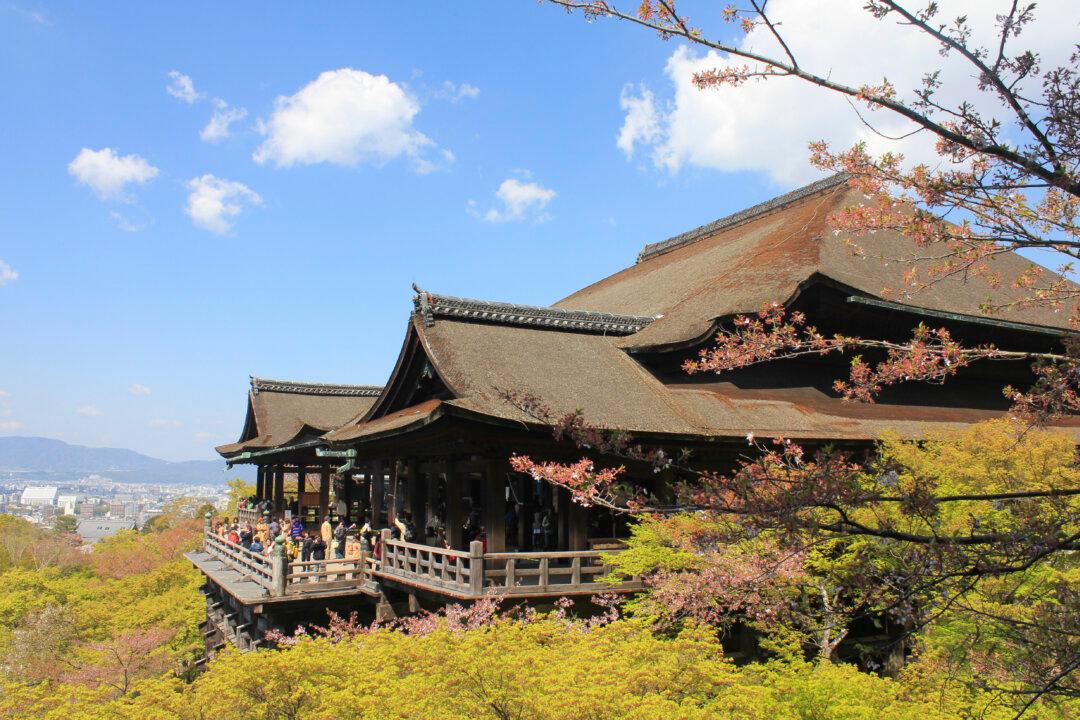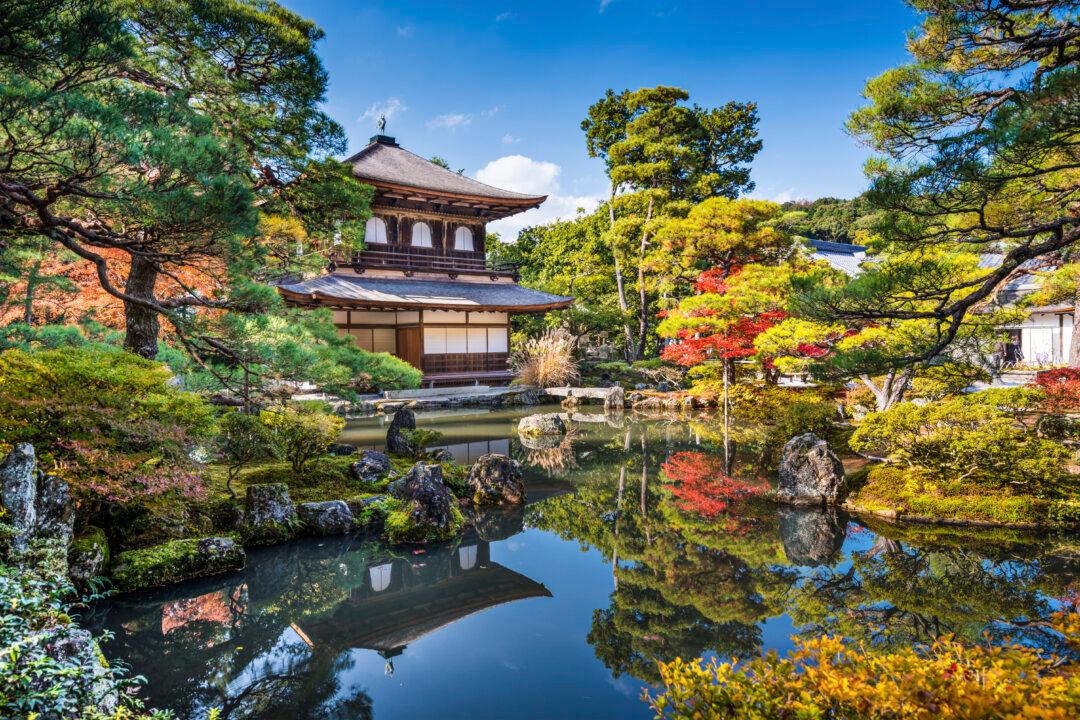Kiyomizu-dera is a magnificent temple set on the Otowa Mountain on the eastern side of Kyoto. The brilliant construction and spectacular views of the city can take your breath away. Kiyomizu means pure water in Japanese, named for the small waterfall running through the temple grounds.
The Kiyomizu grounds are home to many halls, small temples, and shrines along with the spacious main hall. After the steep walk through the shops of Matsubara street, seeing the three story pagoda at the entrance of the temple is a spectacular reward. Take plenty of pictures with the vermillion gate before buying your tickets to enter the main hall.
The main hall is built on huge wooden pillars that extend out from the mountainside. Looking out over the terrace, the view splits between the wooded hillside and the sprawling city of Kyoto. In spring, the hillside is sprinkled with pink and white cherry blossoms, and in autumn, the colored leaves blanket the mountains with oranges and reds. During both of these times, Kiyomizu hosts events to celebrate the change in seasons.
Nighttime illuminations are held in March and October. At night, with more sparse crowds, the temple grounds become a much more peaceful and magical place. These special illuminations are something every visitor should not miss. There are also annual events like Seriyu-e festival, held in mid-March and April. During this event, a dragon marionette is paraded throughout the temple with singing and dancing performers dressed in traditional clothing.
Check out the Kiyomuzu English website for information on these events when you are planning to visit.
Do not leave the temple grounds before walking up the small staircase on the northeast side to visit Jishu Shrine. This small shrine, dedicated to love and marriage, is a unique surprise behind the main hall. Traditionally, temples are built for Buddhist worshippers, whereas shrines are built for people following the Shinto religion. The fact that Jishu shrine is occupying temple grounds is a testament to peace and worshipping together, despite religious differences. When you climb the stairs to Jishu Shrine, do not be alarmed at the people with their eyes closed and hands out, grasping at the air in front of them for something that seems just out of reach.
There are two stones in the temple that are 18 meters apart, and the legend says that if you can get from one to the other without looking, you will find love. Both tourists and Japanese alike line up and carefully tread over the gravel in search of the other stone. There are also places to write down your wishes for love on an Ema, or wooden plaque, and leave it hanging up in the shrine. Buying a good luck charm, called Omamori, can be another way to bring love your way.
Once you have made your prayer for love, line up at the base of the main hall and wash your hands in the small stream of the Otowa waterfall. The clear water is meant to bless and purify you as you make your way around Kiyomizu. Walk down the path where you can look up at the gorgeous construction of the main hall. Amazingly, the entire structure is built without nails, each wood piece fitting into each other like a massive jigsaw puzzle, a marvel of this ancient masterpiece.At the end of the path, some small scattered restaurants offer traditional Japanese food and sweets, which can be eaten outdoors while you enjoy the views.
Kiyomizu is a popular destination and a short bus ride away from Kyoto station. Because of this convenience, the tourists tend to flock to this iconic place during weekends and holidays. Visit on a weekday to escape the crowds and long lines. Also, Kiyomizu-dera is a rare temple that always opens at 6:00am, and early birds can avoid the heat and crowds. With these early morning hours, fit it into your schedule before anything else in Kyoto opens for the day.
Copyright © 2015 by My Destination. This article was written by Cassandra Ling and originally published at My Destination Kyoto.



